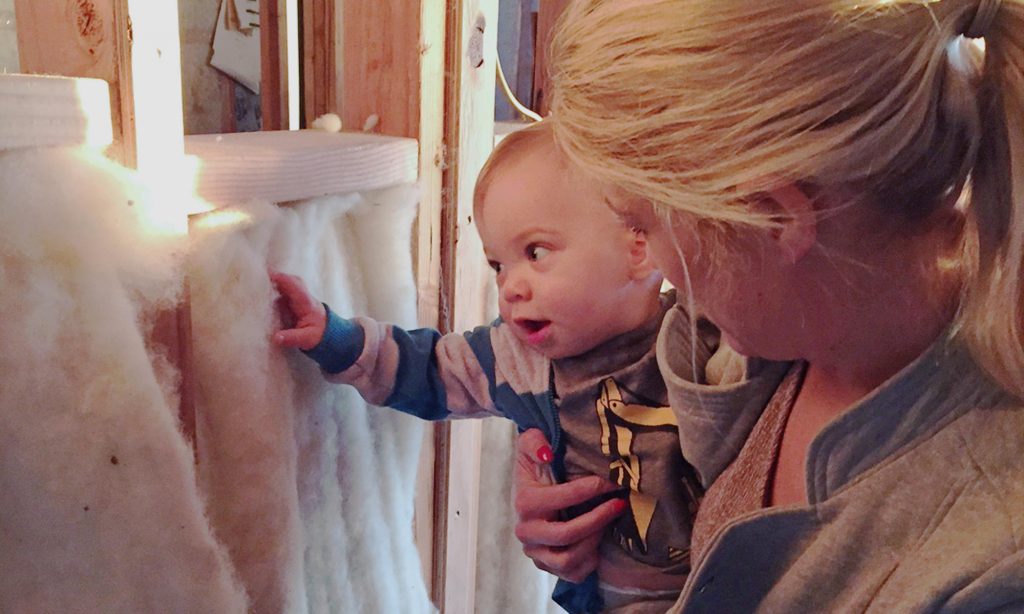Healthy building materials are entering the realm of organic, healthy foods. If you are exercising and eating right why go home to a house full of toxic, underperforming materials? At Havelock Wool, our daily conversations around alternative insulation make it clear the trend is swinging beyond food. People care about healthy homes and want alternative building material options.
But we often get phone calls from interested folks who are struggling to convince their spouse, builder or architect that wool insulation is the best option for them. So here is that ammo to convince those naysayers out there.
Havelock Wool’s RValue is Above Industry Standard
Rvalue is the measure of insulation’s thermal capabilities. The higher the better. Most measure around R3.5 per inch. Havelock Wool batts are industry standard at R3.6 per inch. Havelock Loose-fill is an out-performer at R4.3 per inch. Now closed cell foam attracts interest at R6.7 per inch, but given it’s toxic makeup it has no place in a home or any building. If you want high performing insulation that won’t make you sick, Havelock Wool is the way to go.
Havelock Wool provides flexible product options
Batts or loose-fill? The merits are debated frequently. We have no opinion, which is why we make both products. There are certainly areas where it makes more sense to use batts (interior walls) and others where a higher rvalue is sought (exterior walls / attic) which is where loose-fill can be an advantage. Also, high performance builders will argue batts sag which creates gaps over time. This is down to the material and the install as much as anything. Bottom line, if you have a strong opinion about product, we have you covered.
Havelock Wool installation is not an obstacle
Havelock Wool batts are installed like any other batt. Loose-fill is blown in using a machine (see instruction on our website here). Most installers are trying to get the job done as quickly as possible. Insulation manufacturers have created a race to the bottom whereby the competitive measure is cost so anything that is new and might take longer is of no interest. We find success when your contractor takes over the install from the average large-scale installer. Smaller installers are often quite keen and can do a great job after we hold a few hands. Regardless of who installs, we are always here to help.
Havelock Wool Specs vs Other Insulation products
Everybody loves comparison shopping. We’ve made it easy to measure Havelock Wool insulation against standard and other green insulation products. Check it out here .
There is something wrong with all other forms of insulation – some more than others. Underperformance, low-integrity – get-what-you-pay-for fibers, moldy, chemical laden, particulate omitting, off-gassing, cracking, dissolving, slumping are all some of the common descriptors of insulation. By contrast, nature has given us one fiber, designed as an insulator, that has evolved across 1000s of years in her R&D department.
And a simple reminder of why wool works for your home and our planet
- Wool manages moisture against 65% relative humidity. No other product possesses this characteristic.
- Wool is a keratin and will not support the growth of mold. Other products are susceptible to mold.
- Wool offers passive air filtration and improved indoor air quality by bonding with formaldehyde, NOx and SO2. Other forms of insulation off-gas and/or omit harmful particulate.
- Wool has an extremely low net embodied energy in its creation. Fiberglass and Rockwool use excessive energy to make a product.
- Wool can be composed at the end of extended useful life. Other forms of insulation will be in landfill at best and in the ocean at worst.
- Man’s carbon footprint is, again, making headlines as the planet warms. The wool trade sequesters some 525k tons of atmosphere derived carbon every year.
In sum, just use your intuition. Wool is a highly evolved, highly tested fibre designed by mother nature to serve as an insulator. At Havelock Wool we figured out how to make it an easy solution for home insulation. The industry standard insulation products are either synthetic, low integrity, underperforming or toxic and they are all designed to maximize profits over performance and sustainability.
We hope you found this helpful. As always, please reach out with any questions or comments.
Thanks for reading and be well,
Andrew


Is the wool better “fluffed” or “packed”, I was told the R Value increases with volume. Daz So?
You don’t want to compress the wool as that will minimize its insulative qualities. It should retain it’s natural loft! good question!
I want to insulate my basement . I will be studing with 2×4 walls are 8′ 52’x30’x2 how much will I need and what is the pricing?
All of our pricing is here https://havelockwool.com/buy/